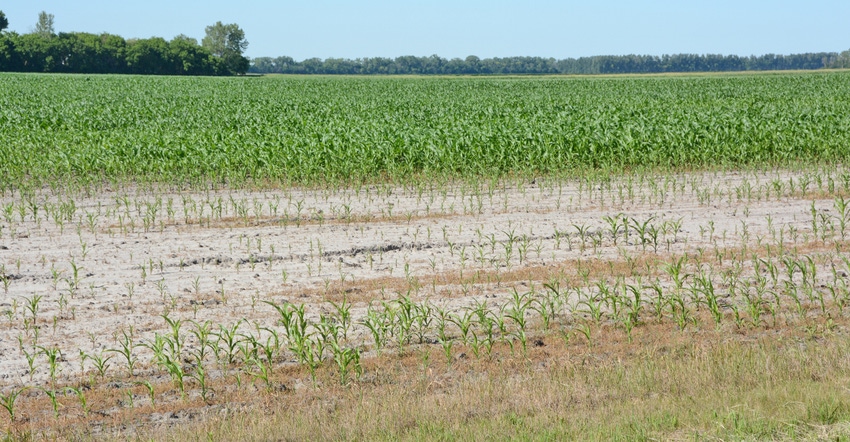June 28, 2018

Before salt becomes visible on the surface, using targeted crop rotations that include small grains followed by high carbon based cover crop mixes or establishment of perennial covers can — with a little cooperation from Mother Nature — sometimes reclaim saline areas in one to three years, says Shane Jordan, Natural Resources Conservation Service district conservationist at Redfield and Clark, S.D.
"Incorporating small grains and cover crops into rotations can be considered an investment into your pest and nutrient programs, with returns coming through increased production potential in subsequent crop yields. Annual management considerations and evaluations will continue to be key to successfully maintaining sustained profitability throughout these sensitive areas," he says.
Once salt becomes visible on the soil surface, long-term reclamation over a period of three to 10 years may be required.
Perennial grasses have proven to be effective because they remove water from the soil profile form early spring to hard freeze, he says. They also generate high levels of residue, enhance microbial functions and develop root systems advantageous to improving filtration.
"A perennial vegetative mixture we have found to be very successful is a mixture of Salinity Max Alfalfa — a newer salt-tolerant alfalfa — blended with Slender Wheatgrass, AC-Saltlander Wheatgrass, Western Wheatgrass, Tall Wheatgrass and Garrison Creeping Foxtail," Jordan says. "Using at least 10-20% of the Creeping Foxtail in our mixtures to reduce drowned out gaps in establishment areas can be critical to overall water management of these areas."
The key to managing wet areas is insuring that a sufficient number of recharge acres are taken in so grasses can establish and encroach on higher salinity affected areas, Jordan says.
Often, producers try to address saline issues by taking in only higher salinity areas, he says. The result is a failed seeding, extended reclamation periods and an unsuccessful reclamation outcome. Garrison Creeping Foxtail is preferable to Reed Canarygrass when forage usage is a consideration. Garrison has proven to offer improved nutritional value and palatability over Reed Canarygrass.
Jeffrey Hemenway, retired South Dakota NRCS soil health specialist, Huron, encourages farmers to manage cropping systems to avoid saline development.
"Planting vegetation that can be harvested or used for forage or enrolling acres in the USDA Conservation Reserve Program are both economical ways to reverse a salinity issue," Hemenway says. "Lowering a water table through use of plants works very well. Water quality can be affected by tiling because any leached nutrients move with the water."
Experienced saline management personnel, such as Extension agents or NRCS specialists, can provide objective insight for individual situations. Removal of land from crop production should also be considered.
"Unproductive soybean and corn acres may be productive when it comes to forages," Hemenway says. "You don’t need to drain land if you run livestock on it. Cover crops also help. Integrating practices that are good for soils and good for hydrology can be very good economically, too."
Source: South Dakota NRCS
You May Also Like




